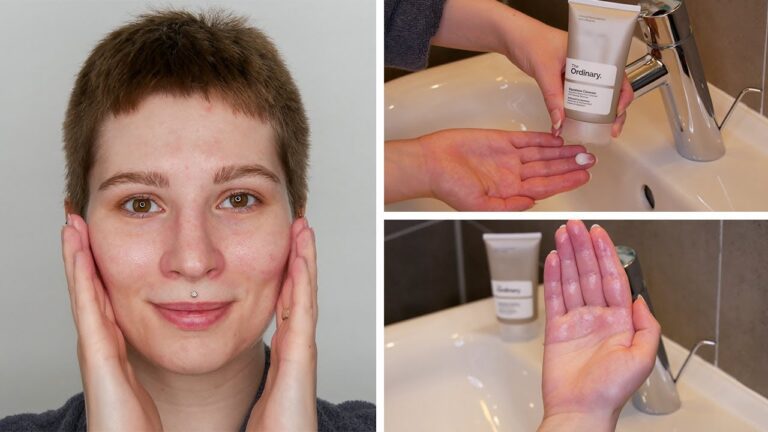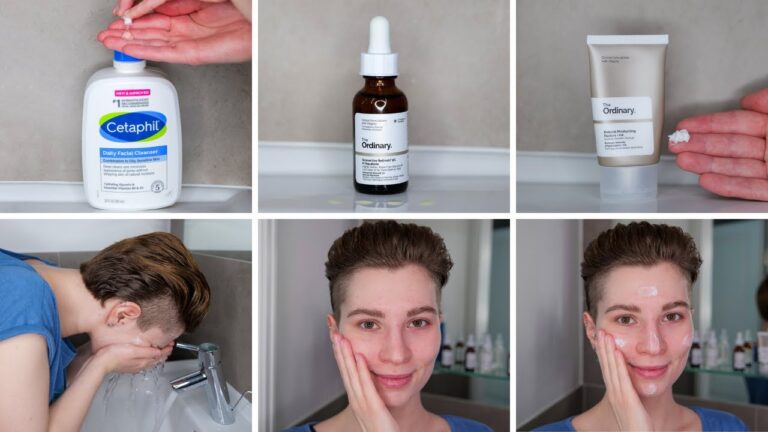Say Goodbye to Redness: Top Skincare Products and Tips to Reduce Skin Redness
Skincare to Reduce Redness: Tips and Tricks
Redness can be a frustrating skin concern. Whether it’s caused by acne, rosacea, or something else, redness can be challenging to cover up and even more challenging to reduce. Fortunately, there are a few skincare tips and tricks that can help you reduce redness and achieve a more even skin tone.
Cleanse Gently with a Mild Cleanser
One of the essential steps in a skincare routine that can help reduce redness is cleansing. However, using a harsh cleanser that strips the skin of its natural oils can exacerbate redness and inflame the skin. Instead, opt for a gentle cleanser that’s formulated for sensitive skin. Look for ingredients like aloe vera, chamomile, and green tea, which have anti-inflammatory properties and can help calm redness.
Apply a Soothing Toner
After cleansing, follow up with a toner that contains calming ingredients to help soothe redness. Look for toners that contain ingredients like witch hazel, rose water, and chamomile. These ingredients can help reduce inflammation and provide a cooling effect on the skin.
Use a Calming Serum
Serums are a great way to deliver potent, active ingredients to the skin. Look for serums that contain ingredients like niacinamide, which can help reduce redness and inflammation. Another excellent ingredient to look for is vitamin C, which can help brighten the skin and reduce the appearance of redness.
Moisturize with a Non-Comedogenic Cream
Moisturizing is an essential step in any skincare routine, but it’s especially important when trying to reduce redness. Look for a moisturizer that’s formulated for sensitive skin and is non-comedogenic, meaning it won’t clog pores. Ingredients like ceramides, hyaluronic acid, and squalane can help hydrate the skin and improve its barrier function.
Apply a Mineral-Based Sunscreen
Sunscreen is crucial, regardless of your skincare concerns. However, if you’re dealing with redness, you’ll want to be especially careful about the type of sunscreen you use. Look for a mineral-based sunscreen that contains zinc oxide or titanium dioxide. These ingredients sit on top of the skin and reflect UV rays, rather than being absorbed by the skin. This can help reduce redness and inflammation.
Consider Adding Azelaic Acid to Your Routine
Azelaic acid is a lesser-known skincare ingredient that can be incredibly effective in reducing redness. It’s a naturally occurring acid that’s found in grains like wheat and barley. It has anti-inflammatory properties and can help reduce the appearance of redness, as well as improve the overall texture of the skin.
Incorporate Anti-Inflammatory Foods into Your Diet
Finally, what you eat can also play a role in reducing redness. Incorporating anti-inflammatory foods like leafy greens, berries, and fatty fish into your diet can help improve the health of your skin from the inside out.
In conclusion, reducing redness requires a gentle skincare routine, using products that are packed with anti-inflammatory and soothing ingredients. Additionally, using a mineral-based sunscreen, incorporating azelaic acid, and anti-inflammatory foods into your diet can also help improve the appearance of redness. If you’re struggling with redness, try incorporating some of these tips and tricks into your skincare routine and see if you notice a difference.
Most searched products:
Does Sephora Support Israel? Answering Your Questions
The Ultimate Guide to Azealic Acid: Benefits, Uses, and Side Effects
How Long Does Glycolic Acid Take to Show Results: Your Ultimate Guide
Discover the Benefits of The Ordinary Botox for Your Skin
Say Goodbye to B.O with Glycolic Acid Deodorant: The Secret to Long-Lasting Freshness
The Ultimate Reviews of The Ordinary Peeling Solution
Deciem Edinburgh
Unveiling the Magic of Hyaluronic Acid: Benefits and Uses Explained
Unveiling the benefits of The Ordinary Buffe serum for healthier skin
10 Amazing Facts about Black Circles and their Meanings













